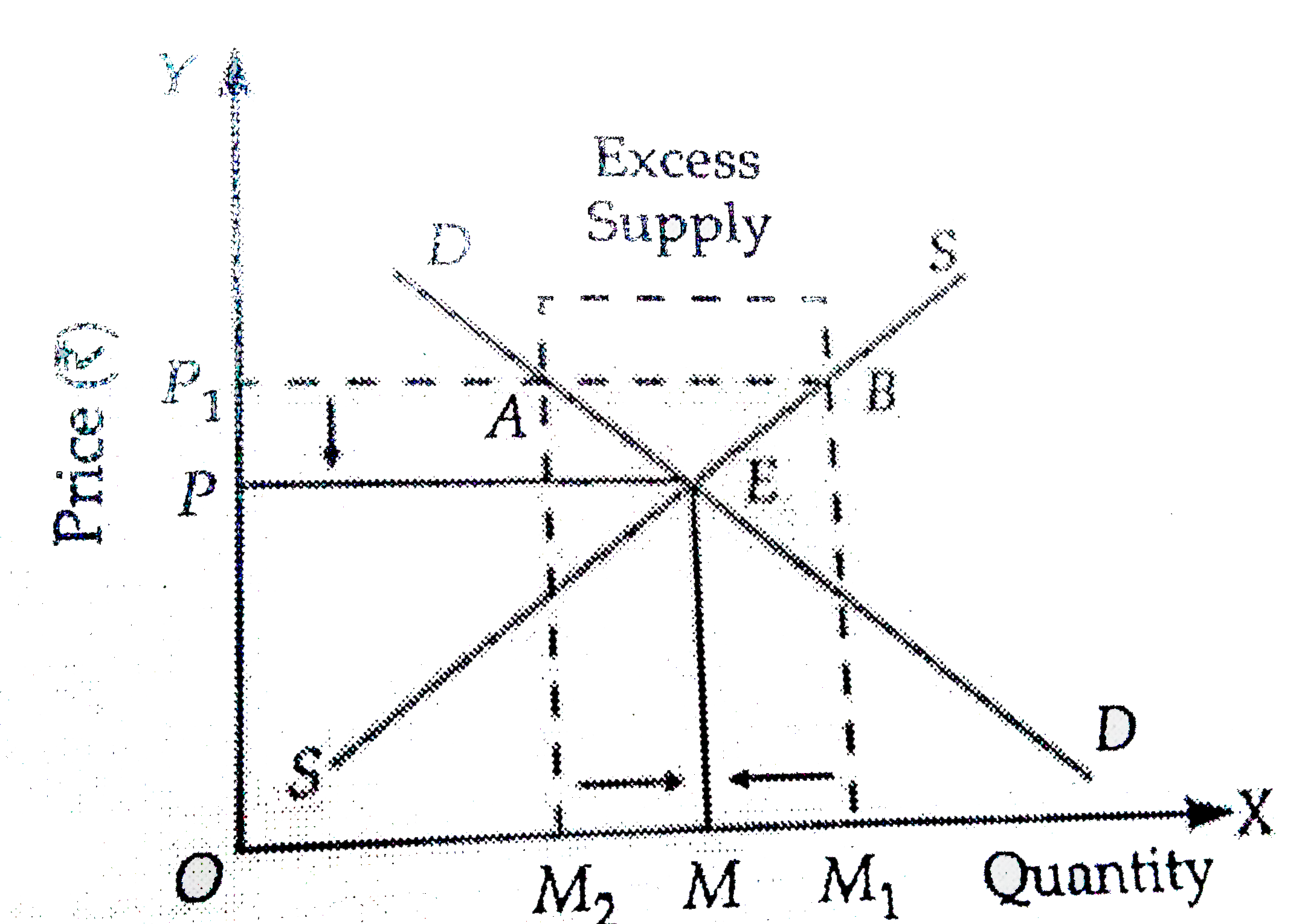Saved Bookmarks
| 1. |
How is equilibrium reached if there is excess supply at a price higher than equilibrium price ? |
|
Answer» Solution :Equilibrium price refers to the price at which market DEMAND is equal to market supply (i.e., there is no EXCESS supply). So, the price with excess supply is not an equilibrium price. In the DIAGRAM, at `OP_(1)` level of price, `M_(2)M_(1)` is the excess supply. When the market supply is greater than the market demand, the COMPETITION among sellers will bring price downwards. The quantity supplied tends to contract in response to the fall in price (law of supply) leading to movement (contraction) along supply curve SS, from point B to point E. At OP, quantity supplied contracts demand, leading to movement (extension) along demand curve DD, from point A to point E. THUS, the quantity demanded rises from `OM_(2)-OM`. The equilibrium is at point E, with OP as equilibrium price and OM as equilibrium quantity. 
|
|
Discussion
No Comment Found
Related InterviewSolutions
- Assumption of ordinal apporch
- Critical appraisal of methods of collection of data
- Different between microeconomics and macroeconomics
- What happense when ic slops downwards
- Implications of perfect competition in forms of market
- If price of mango rises demand will ?
- What is statistical table? Explain briefly tha main characteristics of a good statistical table.
- What is production possibility curve
- Explain any three factor which affect the supply of a commodity
- What do you understand by the increasing returns to scale